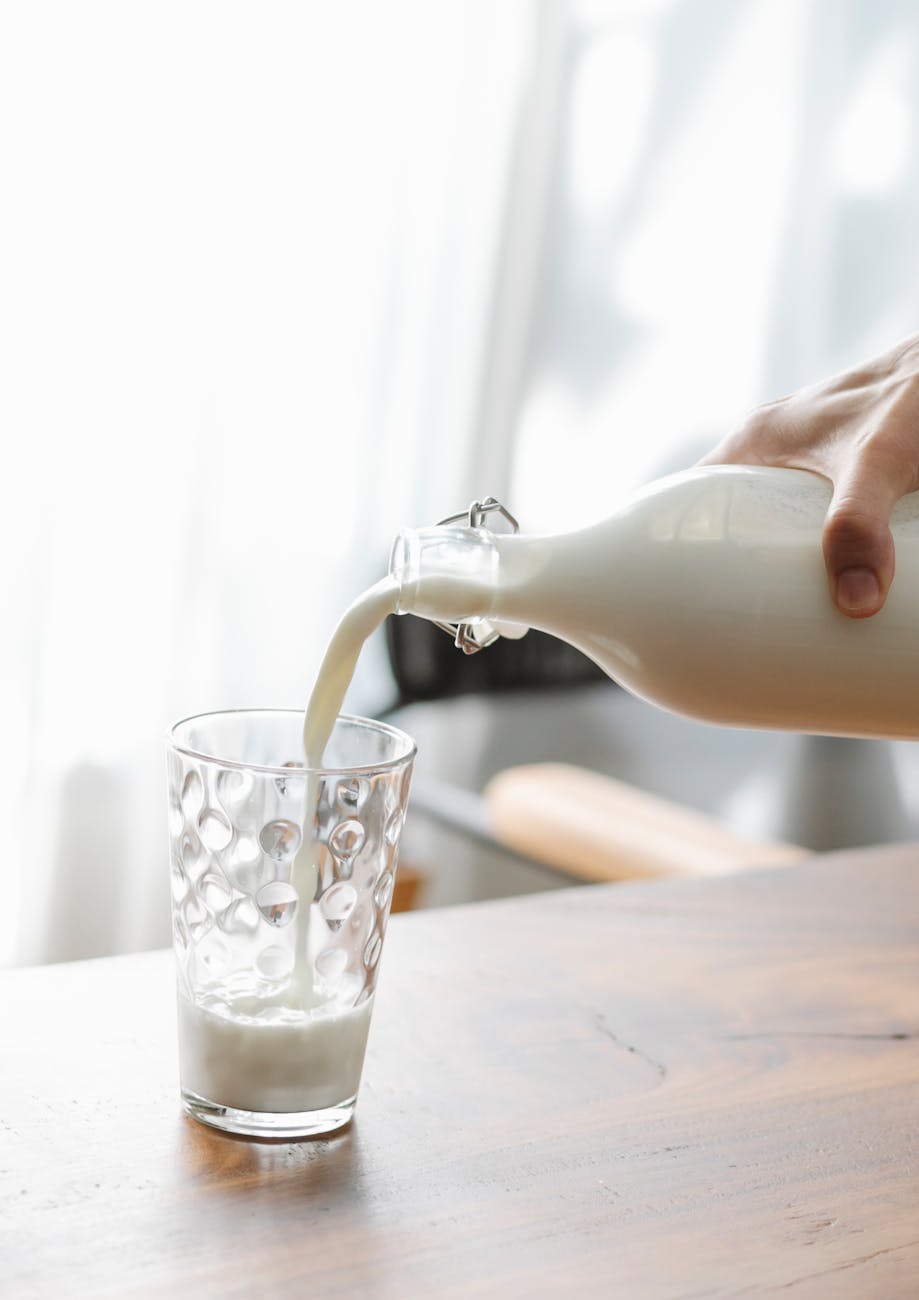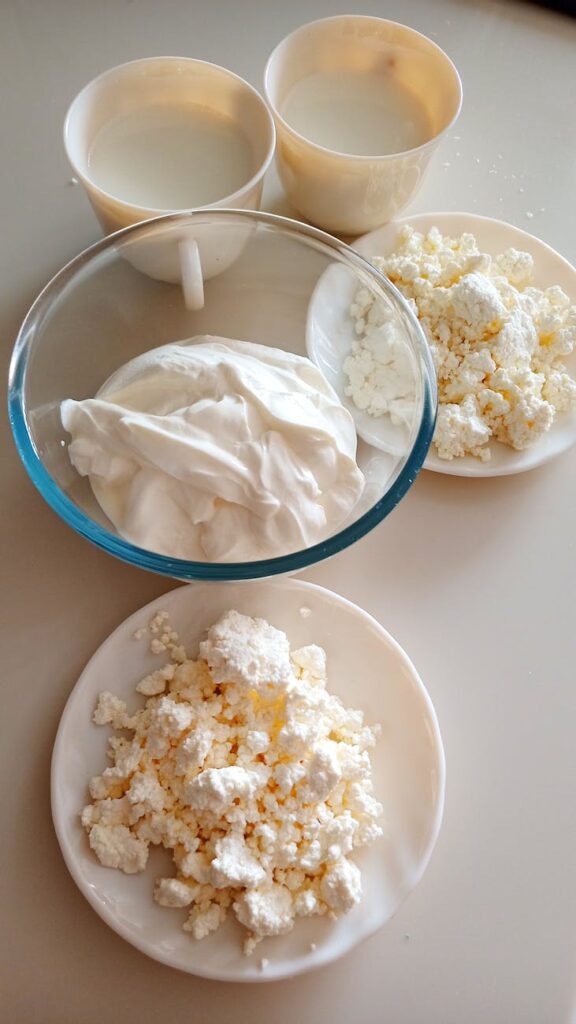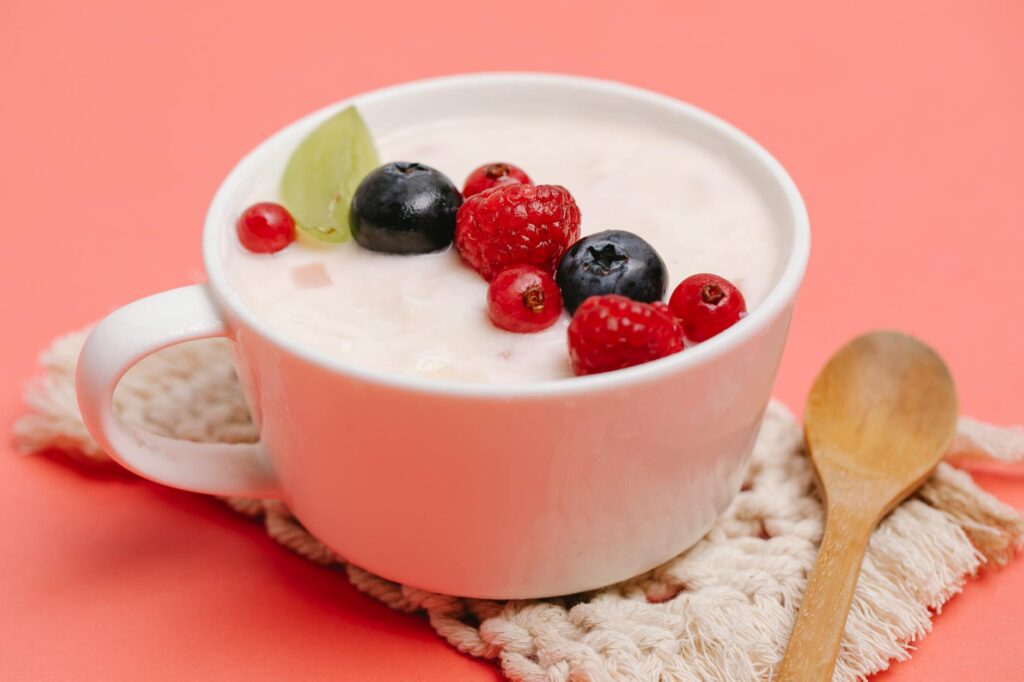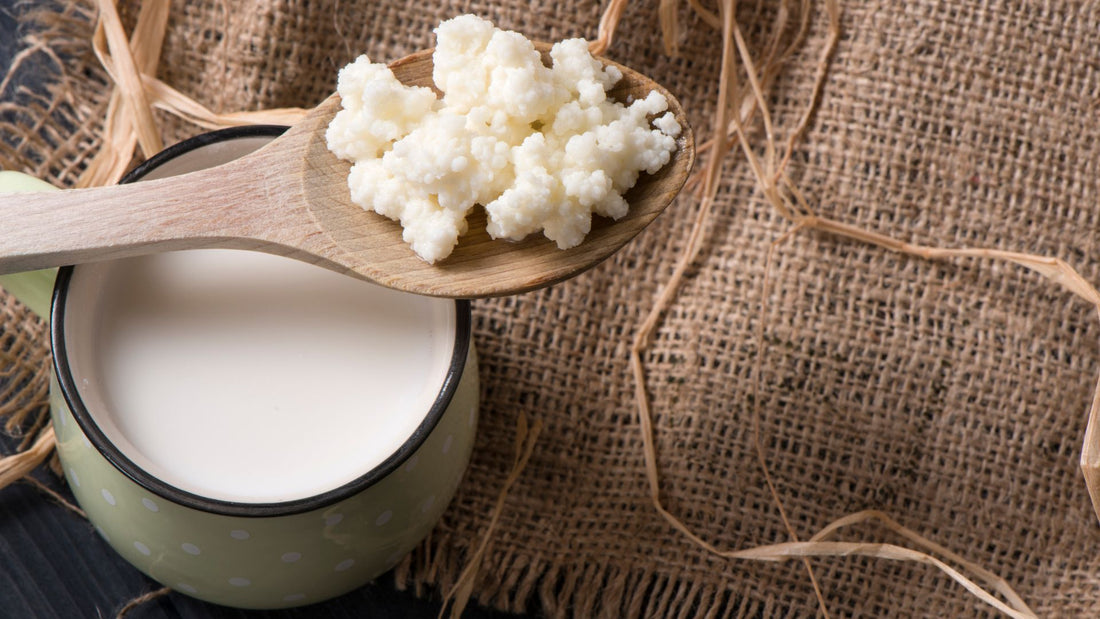Kefir, a common dish in many cultures across the world, has gained enormous popularity in the natural health and sustainable community. Are you lactose intolerant or just do not like the way milk tastes or smells? Well, this is the alternative you have been looking for you protein and calcium intake.
Interestingly, its grains resemble cooked cauliflower. The bacteria and yeast found in it vary depending on how it is prepared. Rich in probiotics and minerals, it is excellent for gut health and digestion. Actually, a lot of people think it's more nutrient-dense than yoghurt.
But what is all this buzz about? And is it even worth it? Let's find out every IFs and BUTs of KEFIR.
What is Kefir?
Kefir is a fermented food or beverage made from kefir grains, typically using milk as a base. It tastes similar to yoghurt, but a bit more sour and acidic.
You can think of the Kefir grains as a colony. They are composed of a symbiotic collection of bacteria including lactic acid bacteria (Lactobacillus, Lactococcus, Leuconostoc), yeasts (Kluyveromyces, Candida, Saccharomyces, and Pichia) and sometimes acetic acid bacteria (Acetobacter).
Is that combination of bacteria and yeast that makes Kefir healthier than other milk-based products.
Where Does Kefir Come From?
The origin of Kefir can be traced back to the region of Elbrus, in the upper mountains of the Karachay region and Balkaria in the north of the country, where it originated. It spread to Russia in the early 20th century and has since spread around the world.

Like thin yoghurt, kefir is a type of fermented milk drink. It has been historically made by combining cow milk with the kefit grains, which are a complex mixture of bacteria and various other microorganisms. It is widely consumed in western Eurasia as a breakfast, lunch, or dinner beverage.
What are Kefir Grains and where to get them?
For thousands of years, people have made kefir using a naturally occurring collection of bacteria, yeasts, and other microorganisms known as kefir "grains. They look like cauliflower and they grow relatively fast so you can keep using them over and over again.

You can ask someone in your community if they would give you some grains to start your own culture. Just a few are sufficient. If not, you can get some natural kefir from specialised stores or online. For total beginners, we recommend the Fairment MIlk Kefir Starter Set because it is organic and contains everything you need to start your fermenting experience easily.
Kefir Health Benefits
Eating fermented foods, such as kefir, can help enhance the diversity of good bacteria in your gut microbiome, which is a unique group of microorganisms that dwell there. A more diversified gut microbiome is healthier for you, as it contains a wider spectrum of "good" microorganisms that perform important activities in your body.

Kefir includes millions of probiotics, which are bacteria that may provide health advantages. It's also low in lactose and high in beneficial vitamins and minerals.
Many of the probiotic bacteria in kefir are particularly adept at living in the potentially harsh circumstances of your gut. There are claims and evidence that kefir can enhance cholesterol levels, blood pressure, blood sugar regulation, and weight loss.
Benefits at a glance
- It has antibacterial and anti-carcinogenic properties
- It can improve bone health and osteoporosis
- It reduces blemishes and stimulates a healthier skin. It has probiotics made of hyaluronic acid that aids in wound healing.
- It may prevent cancer and treat digestive ailments such as ulcers and bowel movements
- It can improve allergy and asthma symptoms
- It metabolises cholesterol and strengthens the immune system
There Might be Some Side Effects
As the saying goes, too much of anything is bad. If you consume too much Kefit, you may experience bloating or gas, as well as cramping or nausea. You may also suffer constipation. However, just 1 to 3 cups daily seem an acceptable moderate amount to avoid these symptoms.
Because of the large number of probiotics, Kefir might not be good for everyone. For instance, people with weakened immune systems should not consume it. If you have or are undergoing chemotherapy you should not use kefir at all.
People who are allergic to cow's milk should not consume cow's milk-based kefir. They can substitute it with the water version (more on that below).
Because the fermentation process reduces much of the lactose, some people with mild lactose intolerance may still tolerate kefir.
How to make Kefir?
Making kefir is very easy. Here is how our founder Lola makes it.

- Place the kefir bacteria grains in a glass jar or container and cover it with milk, leaving a few fingers of air to allow it to breathe. Close the jar loosely.
- Keep it at room temperature and in a dark area. If you don't have a dark spot, you can cover your jar with something (such as a sock).
- Keep the grains in the milk until it changes consistency. It'll look like yoghurt. It usually takes between 24 and 48 hours, depending on how much milk you give it.
- Use a plastic sieve to strain the kefir drink into a glass or bowl. You can stir it slightly with a plastic spoon if necessary, but be careful not to break it. You shouldn't use metal.
Important Tips to Remember
Lola is a regular consumer of home-made kefir. She makes it regularly because it helps with her allergy and immune system. She also shared some tips and tricks below to keep in mind while making and maintaining kefir.

- Do not use metal, just glass, ceramics, wood and plastic.
- Ideally, use full-fat cow milk, but other types also work. Plant-based milks do not work so well.
- The longer you leave it the thicker and more sour it gets.
- It takes a while to get the hang of the amount of milk and the time it needs to ferment. Better to start with small amounts.
- If you forget to change the milk for a few days and it turns too sour, don't worry; simply filter it as usual, dump the drink, and replace the bacteria in the new milk. It may take many days for the kefir to recover.
- If you are on vacation, you can store it in the fridge to slow down the fermentation process, it may take a few days to return to normal.
- As it grows, the fermentation process becomes faster.
- You can use kefir in the same way you would regular yoghurt: drink it, combine it with fruits or nuts, eat it with cereal, etc. If you don't like the sour flavour, add some sugar or honey.
How to make cheese from Kefir?
You can also easily make fresh cheese from your kefir drink. Once you've filtered the drink, place it in a fabric strainer and let it sit for a few hours until all the liquid has drained.

And ta-da, your homemade cream cheese is ready...And do not throw away that left-over liquid. That is the milk whey which is also full of goodness!!
How does Kefir differ from Yoghurt?
Many think that as both are cultured dairy products, they are the same. But that's not true. Some even presume that kefir is a kind of yoghurt, not true either. Yoghurt is made of bacteria and is a cultured dairy product. Yoghurt can be made at room temperature as well as in hot conditions due to the different kinds of bacteria present in it called mesophilic and thermophilic.
On the other hand, kefir is a symbiotic culture of bacteria as well as yeast. It is usually made best at a cool room temperature in a dark space. Its grains can not withstand hot temperatures as it would kill all the good bacteria.

Yoghurt has a milder favour as compared to the strongly sour flavour of kefir. Most people drink kefir and eat yoghurt. However, their consistencies can be manipulated while culturing.
Sorry to hurt your feelings, but "Kefir Yoghurt" does not exist. There is either kefir or yoghurt.
Is there a Water Kefir also?
Yes. Water Kefir, sometimes called tibicos, California bees, Japanese water crystals and many other names, is a type of fermented, carbonated drink made from the grains of water kefir. It’s believed to have been around since the late 1800s.

Water kefir is made by mixing sugar water or fruit juice with Water Kefir grains, a culture of bacteria and yeast. The mixture is usually fermented for 24-48 hours to create a probiotic drink rich in beneficial bacteria.
Water kefir tastes light and refreshing, like a diluted squash or cordial. A slightly tangy taste and bubbles are produced by the fermentation process. The longer the mixture is brewed, the more tangy the taste becomes.
The Processed Kefir

Nowadays, you can buy Kefir drinks from the supermarket but watch out! chances are these will be highly processed with added sugars and preservatives. That is why, whenever possible it is better to make it at home.
Kefir that has been processed typically loses its natural probiotic content due to pasteurization and high-heat sterilization. This lessens the health advantages and live cultures that promote intestinal health.
Furthermore, added sugars, artificial flavours, and preservatives are frequently found in processed forms, which are detrimental to one's general health and well-being.
So Make your Kefir at Home and Enjoy!

Hi, I am Jahnvi Vyas. I have a Master’s in environmental science and my love for nature inspires me to be a more sustainable person. I am also an editor with a passion for graphics and video editing trying to learn new things

